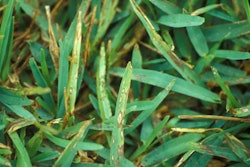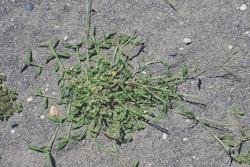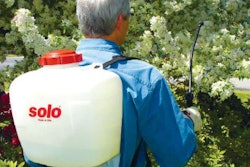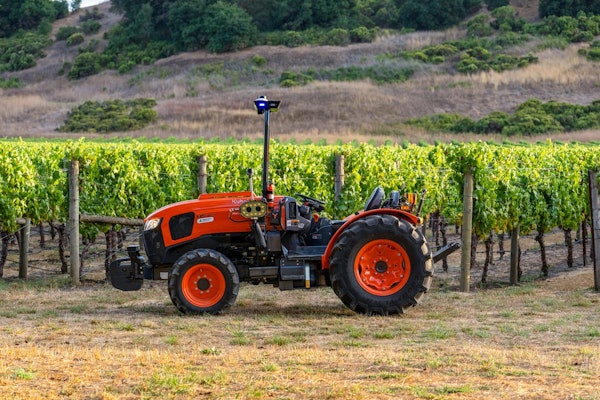Leaf feeding by insects on trees and shrubs is a common enough problem in landscapes. Most of the time, these insect pests do little damage and are gone by the time you even notice. You may notice a few holes in the leaves or that they’re beginning to curl around the edges. No real harm is done to the plant in these instances, and control is not necessary, especially if the feeding takes place only for a short period of time or early in the season.
Other times, however, the feeding is more noticeable, which can prompt treatment from an aesthetic level alone. More than likely, your client’s tolerance for holey leaves is less than what the plant’s is. In fact, research indicates that most healthy deciduous trees can withstand a complete defoliation every three or four years.
Occasionally, insect pests do pose a true threat to ornamentals, especially if a pattern or annual infestation develops. Because leaf-feeding insects target the most succulent part of the plant – the part where the leaves make sugars and carbohydrates – they begin to weaken the plant over time. Repeated infestation not only robs the plant of its foliage, but eventually takes away the plant’s ability to sustain itself.
The usual suspects
- Caterpillars. There are many different kinds of caterpillars, but they all have one thing in common: a voracious appetite. These insects need to eat a lot in preparation to pupate. Some will consume leaves completely while others will be slightly more selective and only partially eat the leaves. Still others choose to chew holes in leaves or target the area between leaf veins.
Moth caterpillars can be especially destructive and include the eastern tent and forest tent caterpillar as well as the fall webworm. You can distinguish eastern tent from forest tent caterpillars by looking at their backs. Forest tent caterpillars have key-hole markings along their backs while eastern tent caterpillars have a white stripe. Eastern tent caterpillars prefer to feed on apple and crabapple trees, but will sometimes also choose maple, oak, ash and a variety of fruit trees. You may first notice their silky nests in limbs. Like the eastern tent caterpillar, forest tent caterpillars will also infest oak, ash and maple trees, but they can also be found in boxelder, cottonwood, elm, birch and sweetgum trees. The two caterpillars differ, though, in that forest tent caterpillars do not make nests. Instead, they make a silky mat on branches and tree trunks. Both types of caterpillars are active only in the spring.
Fall webworms are some of the least plant-specific of the leaf-feeders, attacking nearly 90 species of trees in the U.S. You can find them in hickory, elm, pecan, maple and walnut trees, to name only a few. They are active spring through fall and can completely defoliate small trees. You may first notice their presence when you see the webbing in limbs throughout the trees.
Probably the most infamous in this category is the gypsy moth, whose infestations can be severe, defoliating many types of trees. While they prefer oak, willow, basswood and birch, they’ll attack a number of other trees and even feed on pine and spruce trees. These pests have been targeted by eradication efforts in many states. The caterpillars hatch in April and May and are brownish-gray, hairy and have blue and red spots on their backs. You may notice them hanging by a silken thread from tree branches.
- Sawflies. These pests feed on a variety of evergreen and broadleaf plants, including dogwood, birch, cherry, pear, elm, oak, azalea and pine trees. There are many species of sawflies, but the adult is usually light brown and only / inch in length. The female plants eggs on the underside of leaves, and larvae can vary in color, but are often grayish to yellow-green, sometimes with stripes. The species also vary in voracity.
Biting back
Identification is the key to successfully controlling leaf-feeding pests. What you don’t want to do is begin spraying and kill off a beneficial insect, which will actually cause an increase in other pest problems.
Also consider how much of the pest you can rid simply by physically removing it. You can remove silken nests and caterpillar pests by pruning branches or removing by hand (use gloves). Blasting them with water to knock them out of trees can also work.
Biopesticides are another environmentally-friendly option. The commercially available pathogen Bacillus thuringiensis, variety kurstaki, can kill caterpillars within a few days. Use this treatment on warm, sunny days when caterpillars are feeding. They’ll ingest it and develop gastrointestinal disruption. Horticultural oils and insecticidal soaps can also be effective for fending off leaf-feeders.
Spraying or injecting insecticide is often more practical, especially if you’re trying to treat a large tree or shrub. Target younger stages of the insects by monitoring their life cycles. If the insects have only one generation per year, you’ll have only one opportunity for control. But they may have two or more generations per year, so you’ll want to closely monitor plants so that you’ll be able to control them before they do much damage.
Foliar-applied insecticides offer a good solution for pests on shrubs and smaller trees, but you’ll want to consider trunk injection for larger trees. These injections get the insecticide into the tree’s vascular system, which will take it throughout the tree – even to hard-to-reach areas. The other benefit of this option is no spray drift.
Look for insecticides with these active ingredients: halofenozide (Mach 2), carbaryl (Sevin), bifenthrin (Talstar, Bifenthrin Pro), cyfluthrin (Tempo) and deltamethrin (DeltaGard).










